Chinese Propaganda Posters From The Cultural Revolution Ages, 1960s-1970s
“Speed Up Agriculture Using Modern Machinery.” 1971.

Photo credit: David Pollack / Corbis via Getty Images
In 1966 Mao Zedong, the Communist leader of China, started a political campaign that became known as the Cultural Revolution (1966-1976). Mao called on China’s youth to help him purge capitalist influences and bourgeois thinking in government, teaching, the media and arts, and to reinvigorate the revolutionary spirit.
h/t: rarehistoricalphotos
“Fully criticize the Chinese Khrushchev from a political, ideological, and theoretical perspective.” 1967.

Photo credit: David Pollack / Corbis via Getty Images
Calling themselves The Red Guards, radical students set out to destroy the “four olds”: old ideas, customs, habits and culture. They spearheaded the interrogation, humiliation and beatings of teachers and intellectuals, and traveled the country destroying cultural heritage. During the Cultural Revolution traditional artists were condemned as counter-revolutionaries and their work destroyed. A new style of art was required that supported the Maoist line and served the worker, peasant and soldier.
“Greet the 1970s with the new victories of revolution and production.” 1970.
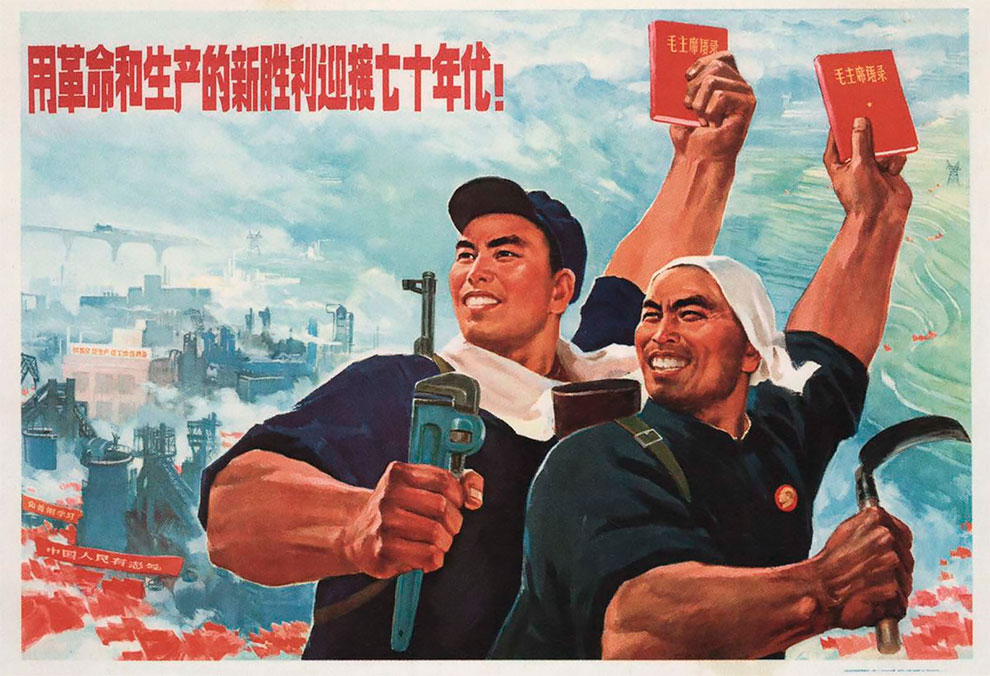
Photo credit: David Pollack / Corbis via Getty Images
The decade was marked by purges and power struggles at the upper echelons of government, and the mobilization of masses of young people to enforce Maoist thought. One of the primary vessels for disseminating instructions and models of behavior was propaganda art. Vivid posters were created to inspire citizens to put forth their labor towards agriculture, industry and national defense, as well as concerns such as hygiene and family planning.
“Produce More Coal and Support the Socialist Construction.” c. 1970.

Photo credit: David Pollack / Corbis via Getty Images
Slogans are often used alongside imagery in posters, usually written in bold, Chinese script. They include pro-revolution messages about “working hard”, “uniting for victory” and “working towards the general communist goal. “Bright” colors are used in many of the posters and red appears a lot as it is the color of communism and revolution. Much of the work that came out of the Cultural Revolution is attributed to committees or groups, rather than individuals. Thousands of copies of the posters were printed and sold cheaply as the establishment at the time wanted the posters to be something that everyone should have on their walls at home. Many of the posters were painted by hand and then printed as lithographs, a process involving using stone, oil and chemicals to create prints.
“Never Tire of Training to Destroy The Enemy.” c. 1970.
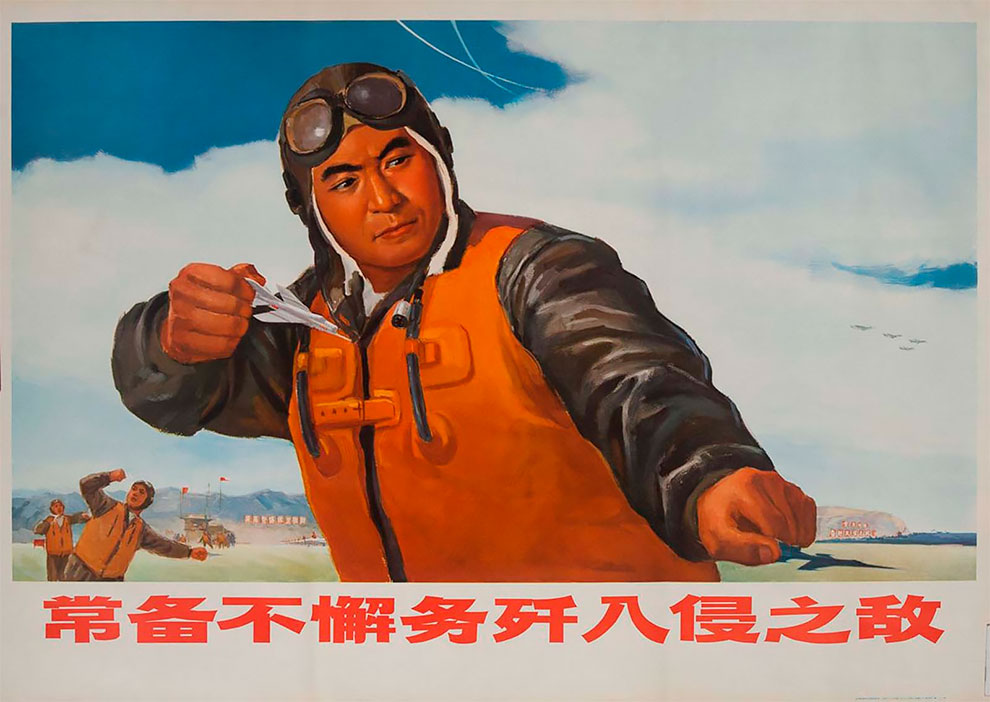
Photo credit: David Pollack / Corbis via Getty Images
“Grow Strongly Under the Broad Sky and Earth.” c. 1970.
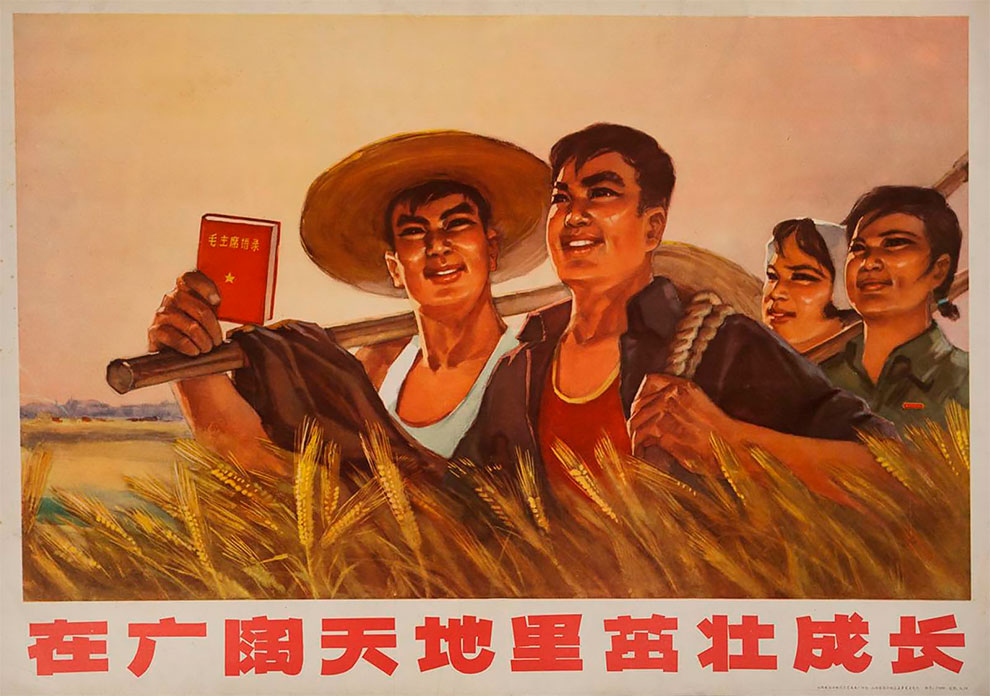
Photo credit: David Pollack / Corbis via Getty Images
“Protect the Forest.” c. 1970.
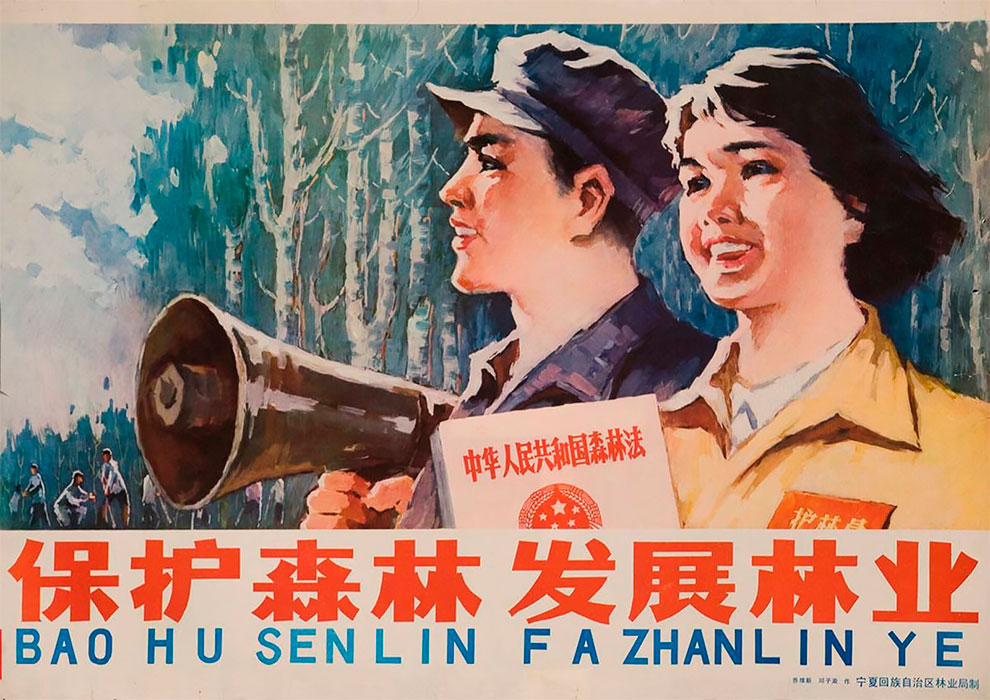
Photo credit: David Pollack / Corbis via Getty Images
“Prepare for Struggle, Prepare for Famine, Work for the People.” c. 1970.
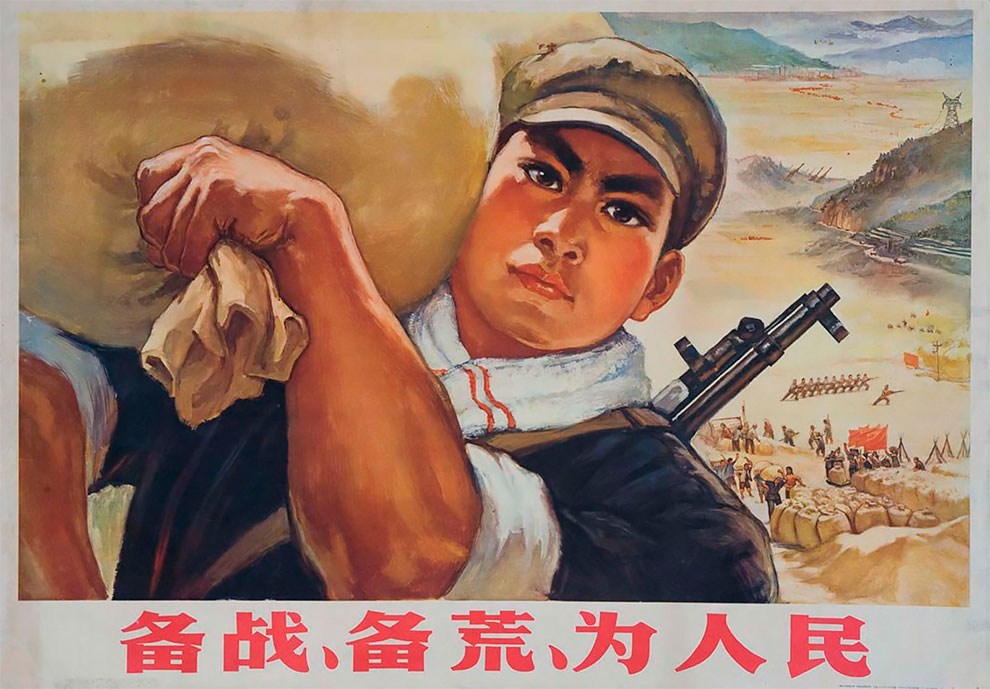
Photo credit: David Pollack / Corbis via Getty Images
“If You Want to Prosper, You Must Control The Population.” c. 1970.
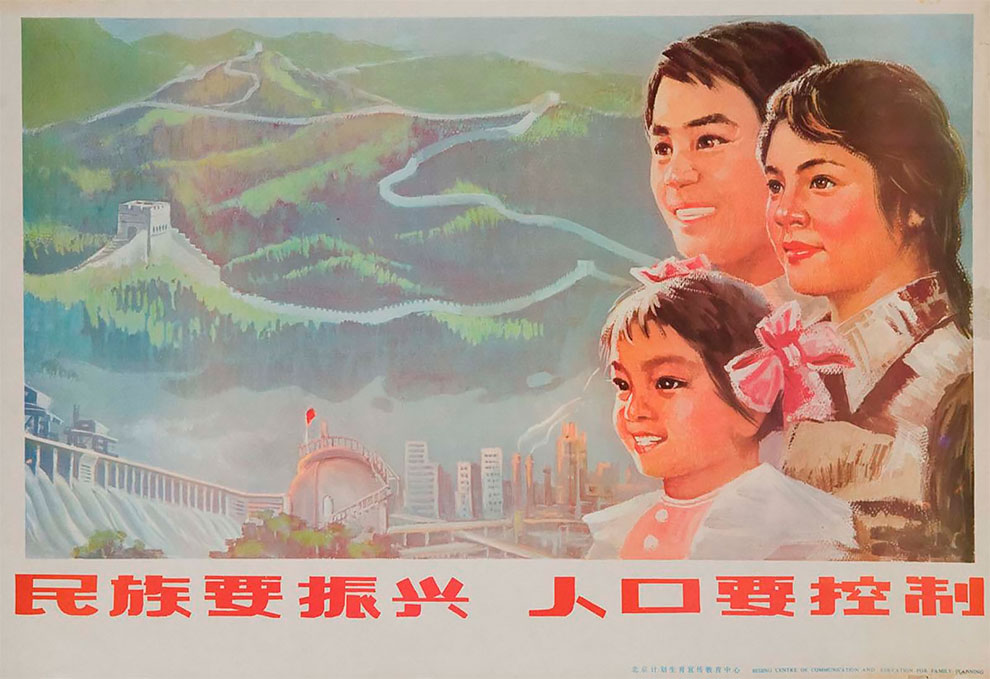
Photo credit: David Pollack / Corbis via Getty Images
“Prevent Hepatitis by Washing.” c. 1970.
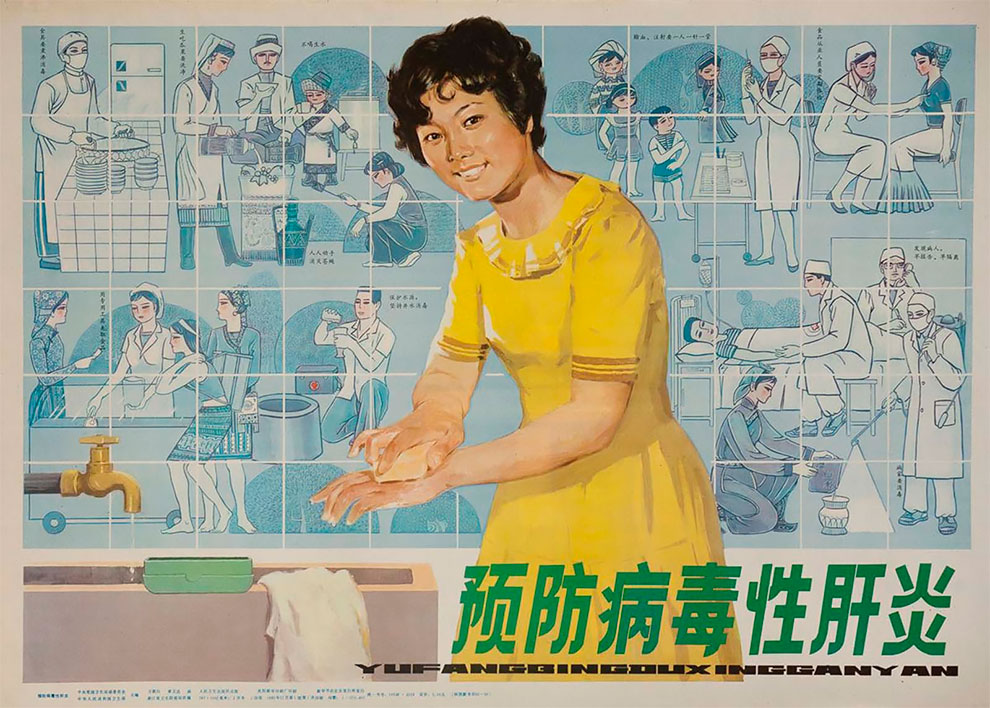
Photo credit: David Pollack / Corbis via Getty Images
“Learn Science, Build The Country.” c. 1970.
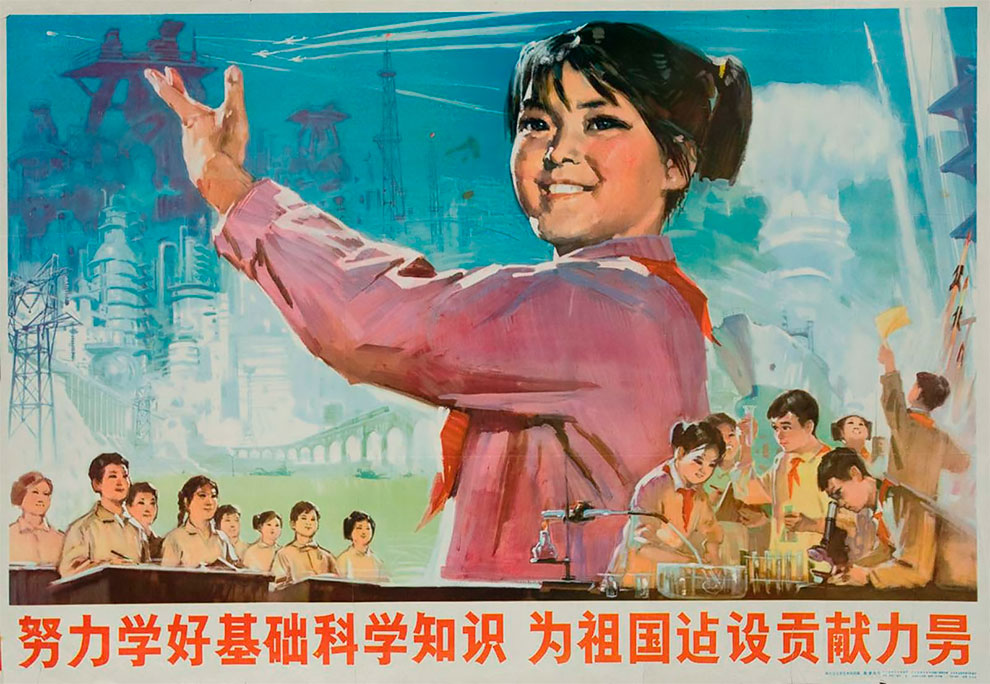
Photo credit: David Pollack / Corbis via Getty Images
“Set a Good Example, Fight Corruption.” c. 1970.
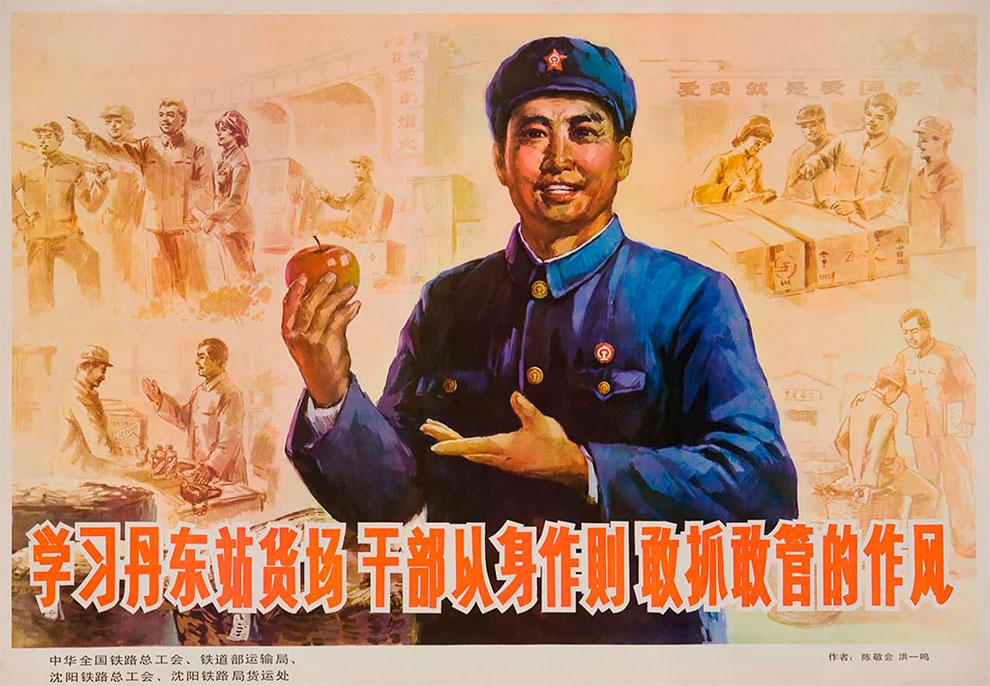
Photo credit: David Pollack / Corbis via Getty Images
“Teach the Younger Generation.” c. 1970.

Photo credit: David Pollack / Corbis via Getty Images
“Go to the Big Ocean To Exercise.” c. 1970.
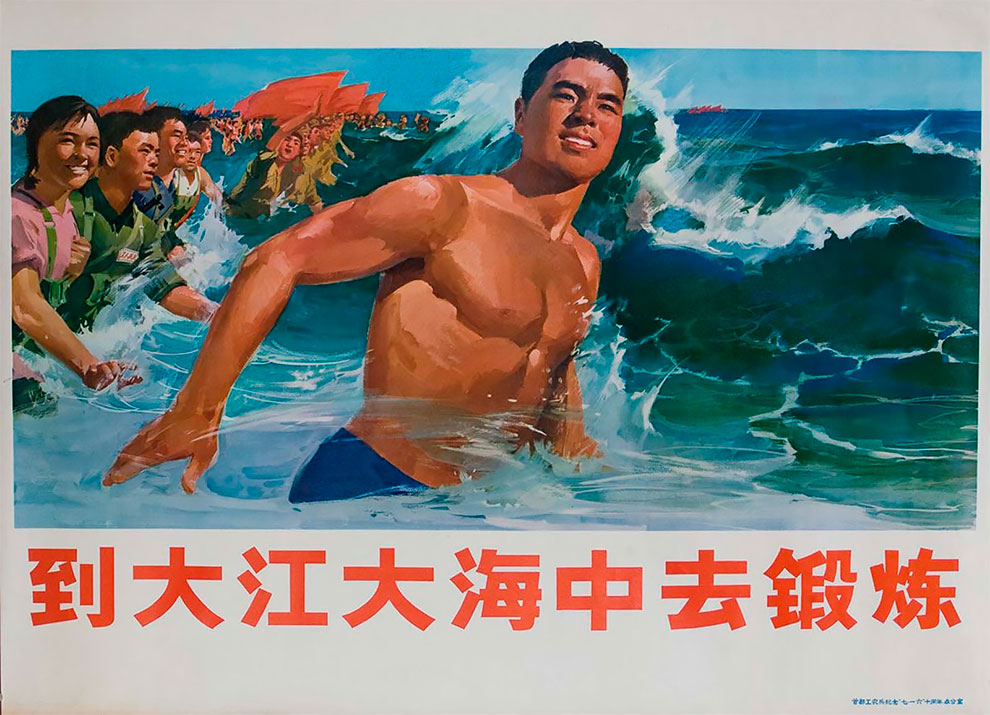
Photo credit: David Pollack / Corbis via Getty Images
“Let Mao’s Philosophy Be Our Strongest Weapon.” c. 1970.
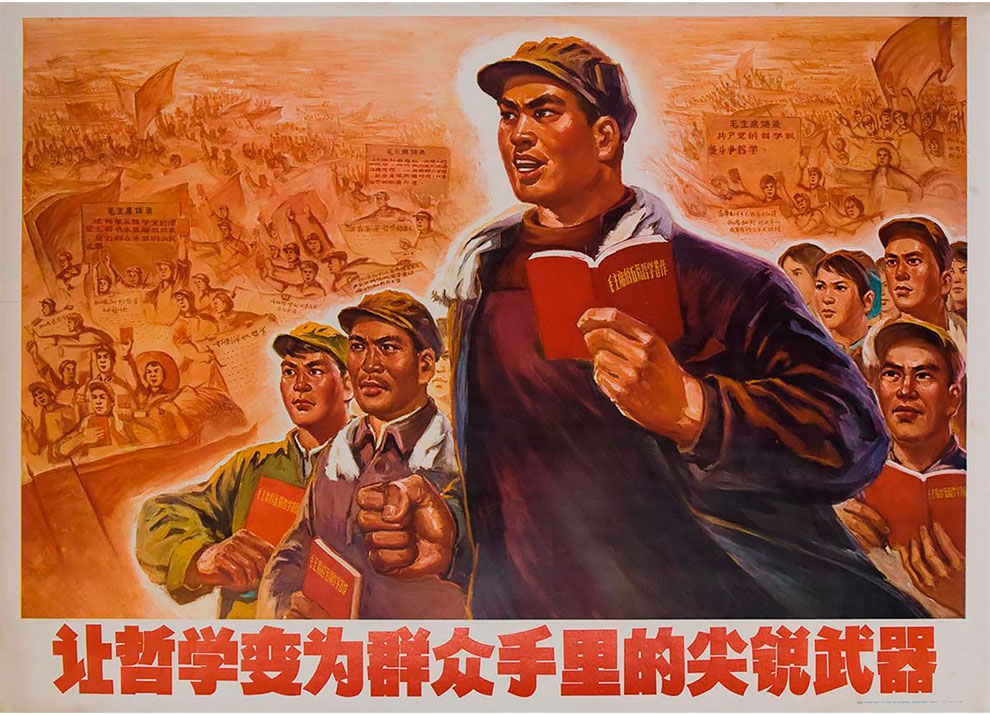
Photo credit: David Pollack / Corbis via Getty Images
“The Cadre Should Mix With the Workers.” c. 1970.
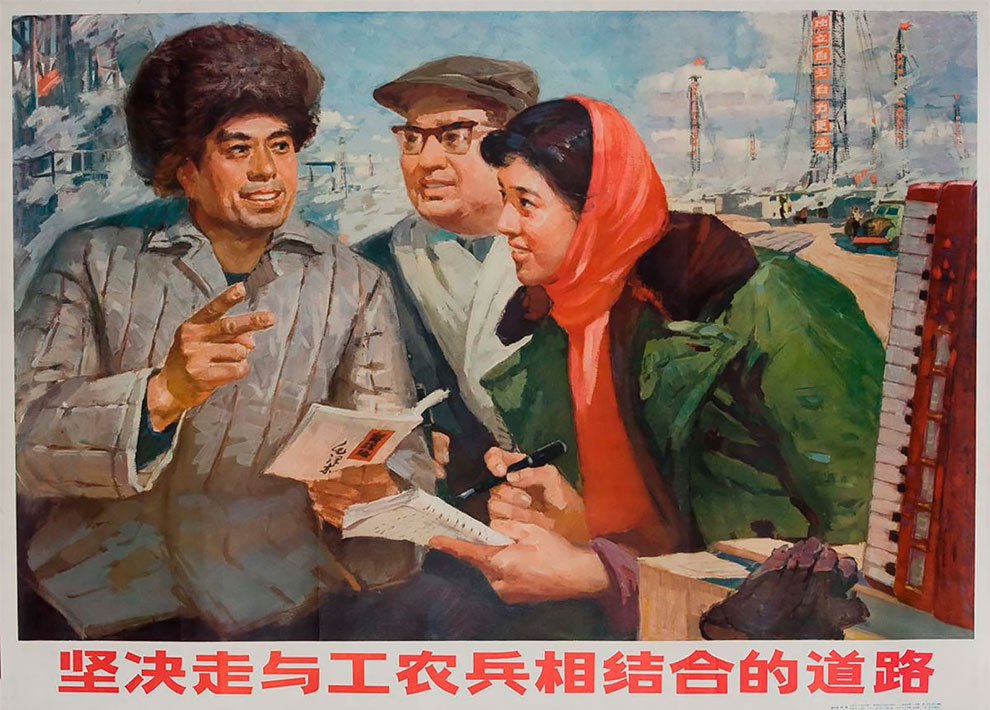
Photo credit: David Pollack / Corbis via Getty Images
“Be Prepared Now.” c. 1970.
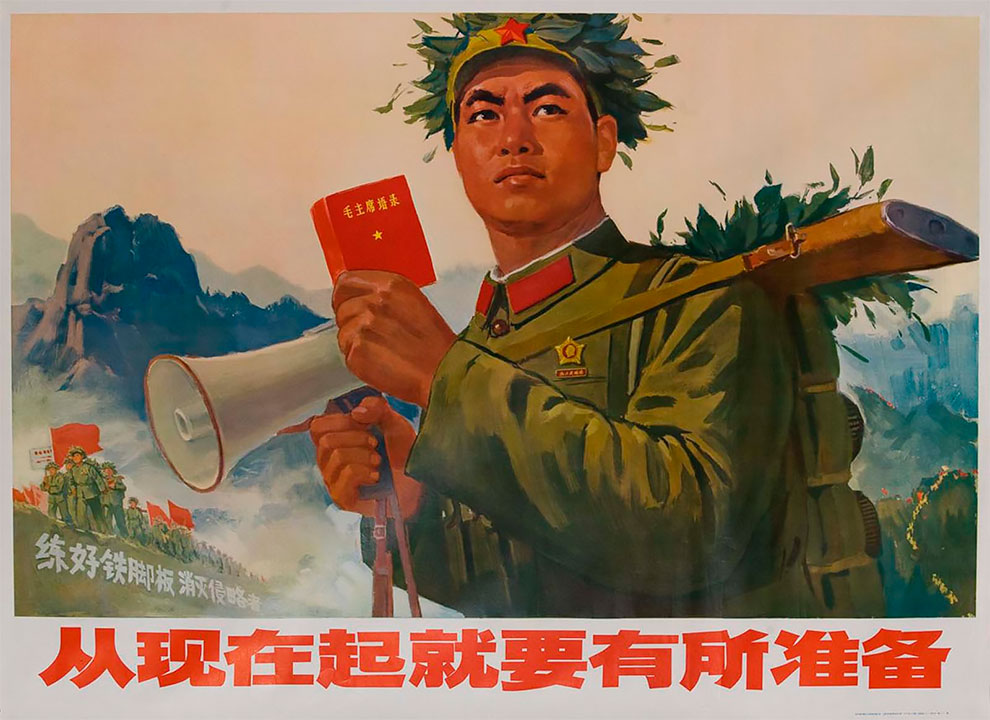
Photo credit: David Pollack / Corbis via Getty Images
“Be on Guard, 100 Times Alert.” c. 1970.
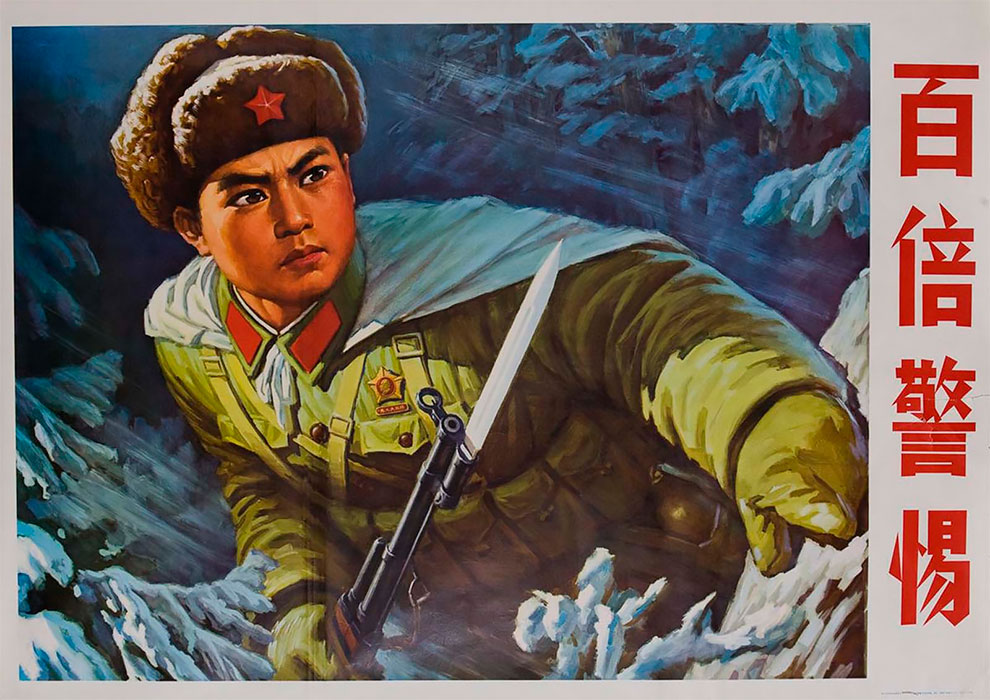
Photo credit: David Pollack / Corbis via Getty Images
“Celebrate the 9th Congress of the Industrial Union.” c. 1960.
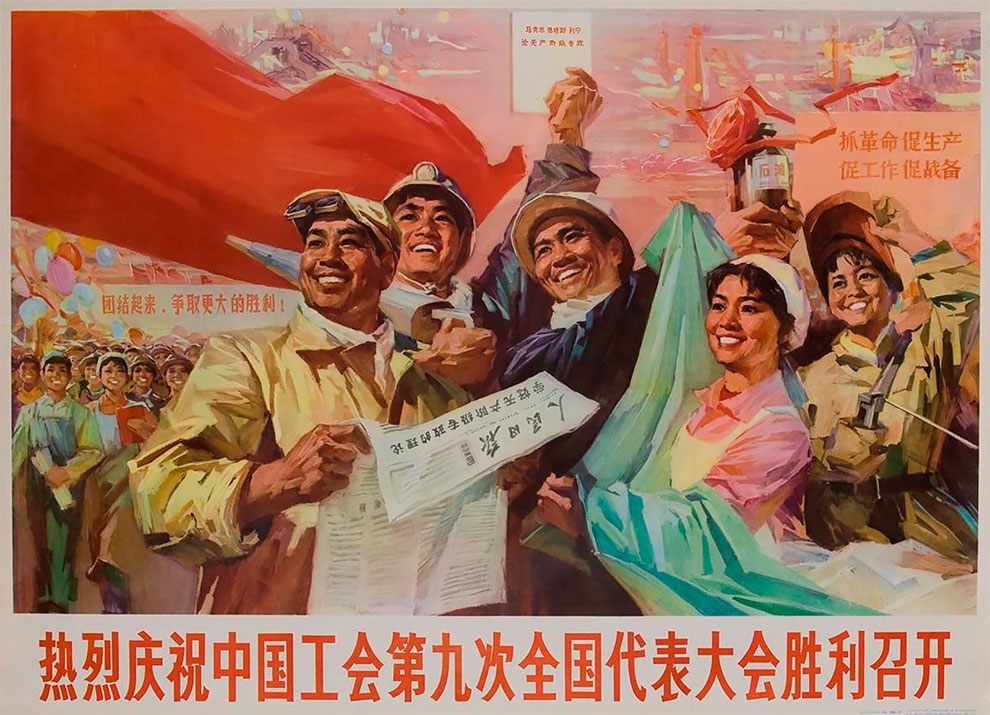
Photo credit: David Pollack / Corbis via Getty Images
“Learning Dai Qi by Making More Contributions!” c. 1970.
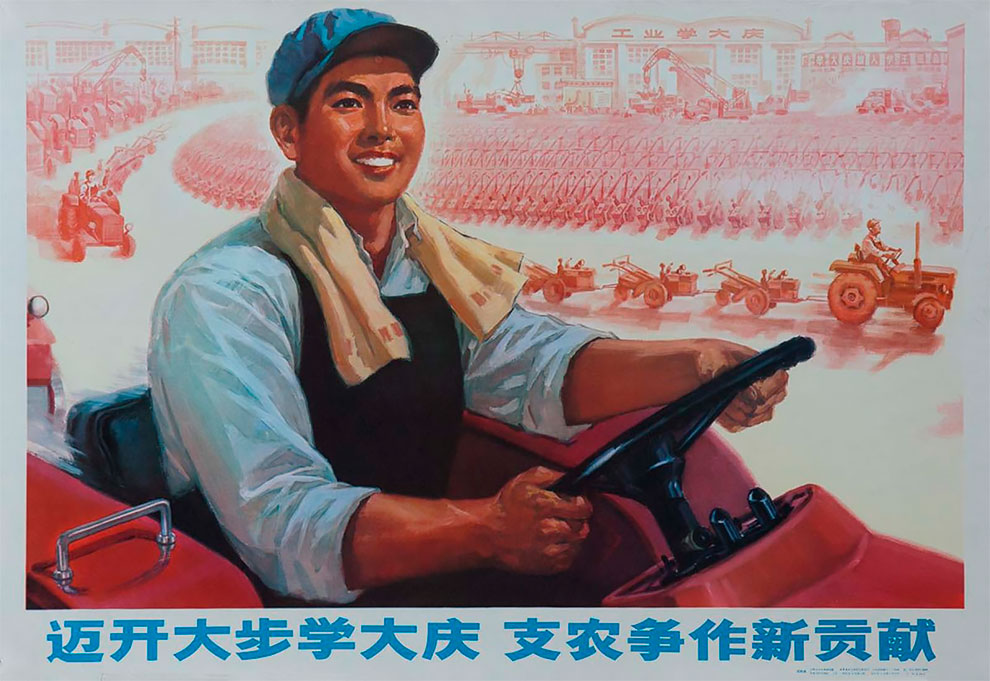
Photo credit: David Pollack / Corbis via Getty Images
“Annihilate the Invading Enemy.” c. 1970.
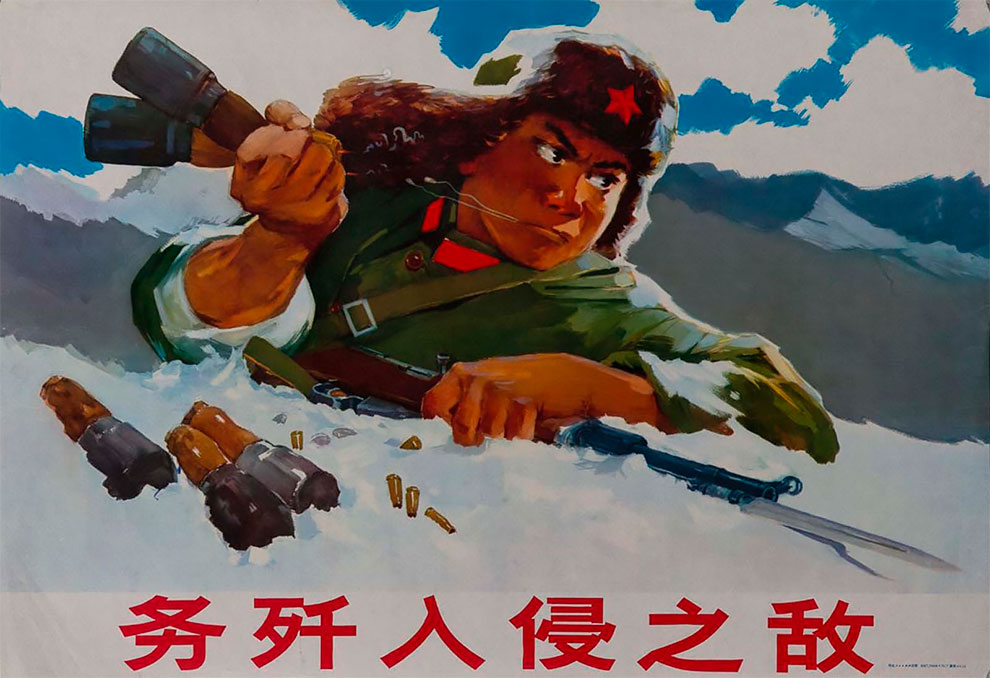
Photo credit: David Pollack / Corbis via Getty Images
“Grasp Revolution, Promote Production.” 1976.
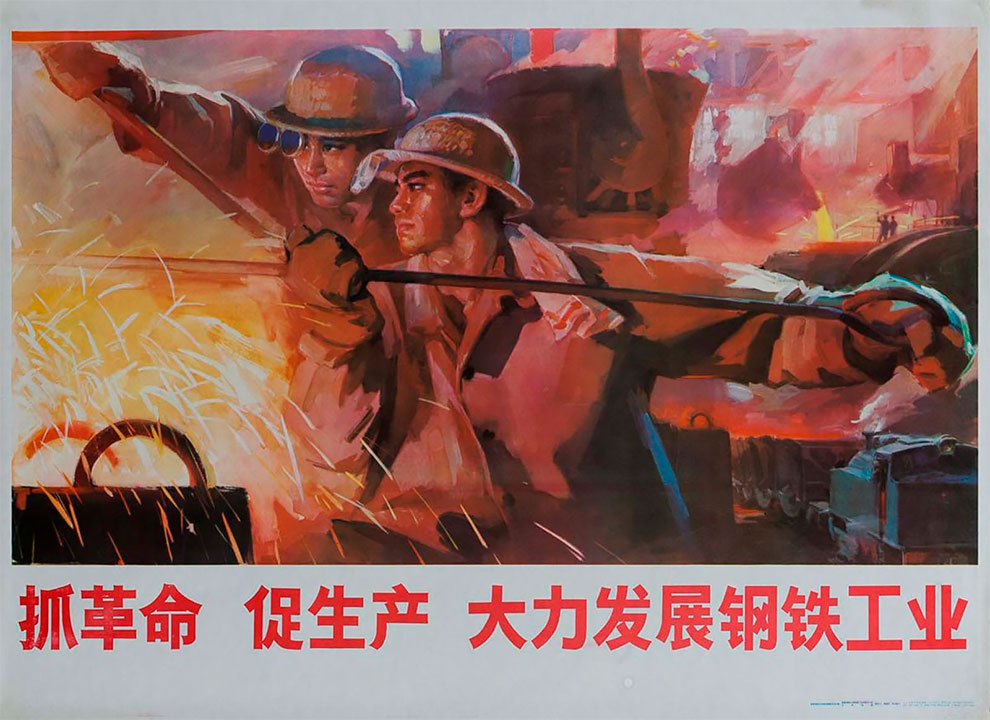
Photo credit: David Pollack / Corbis via Getty Images
“Enhance the Coastal Defense of the Motherland.” 1962.
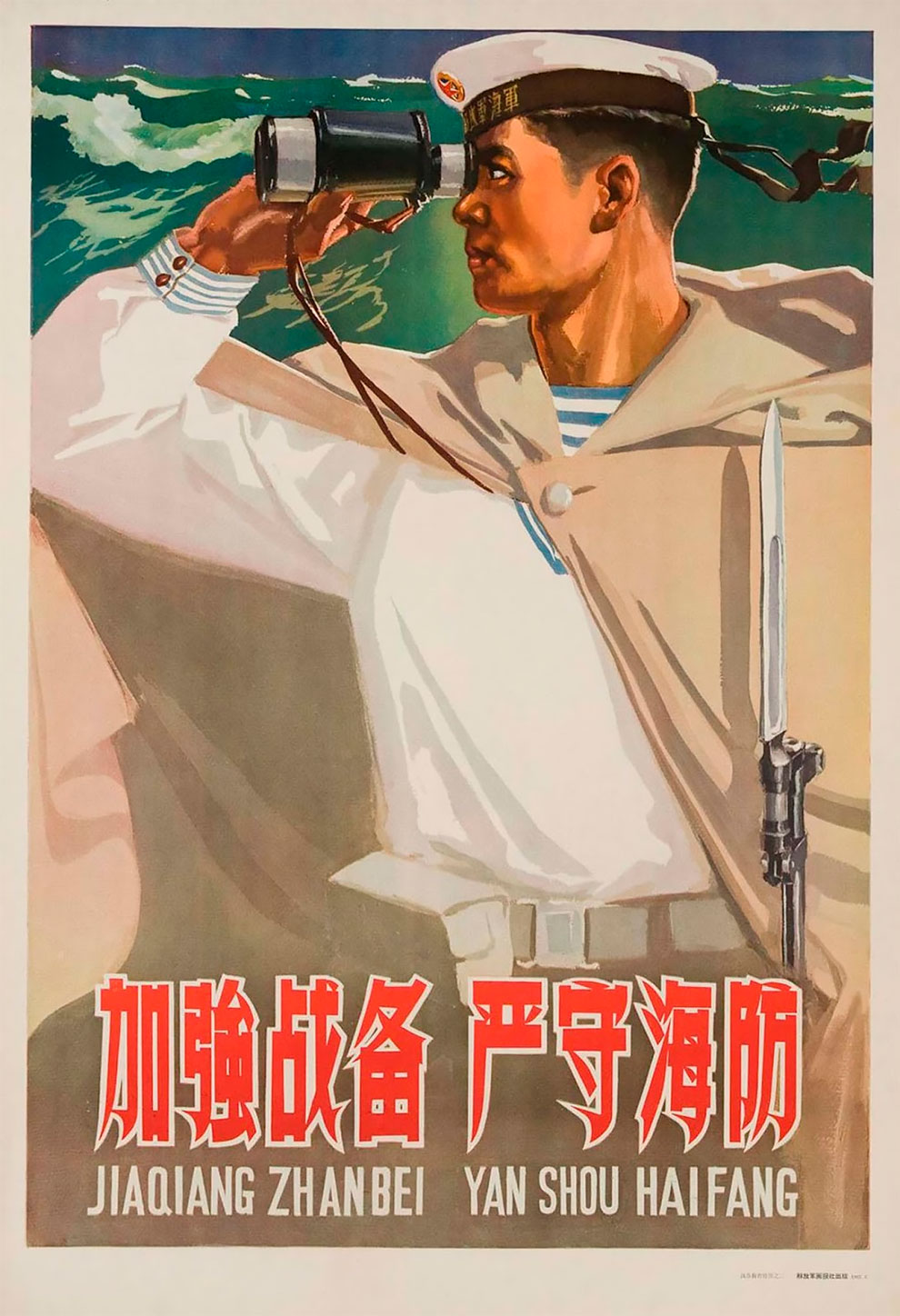
Photo credit: David Pollack / Corbis via Getty Images
“Shipyard Industry Workers Learn From Da Qing.” 1976.
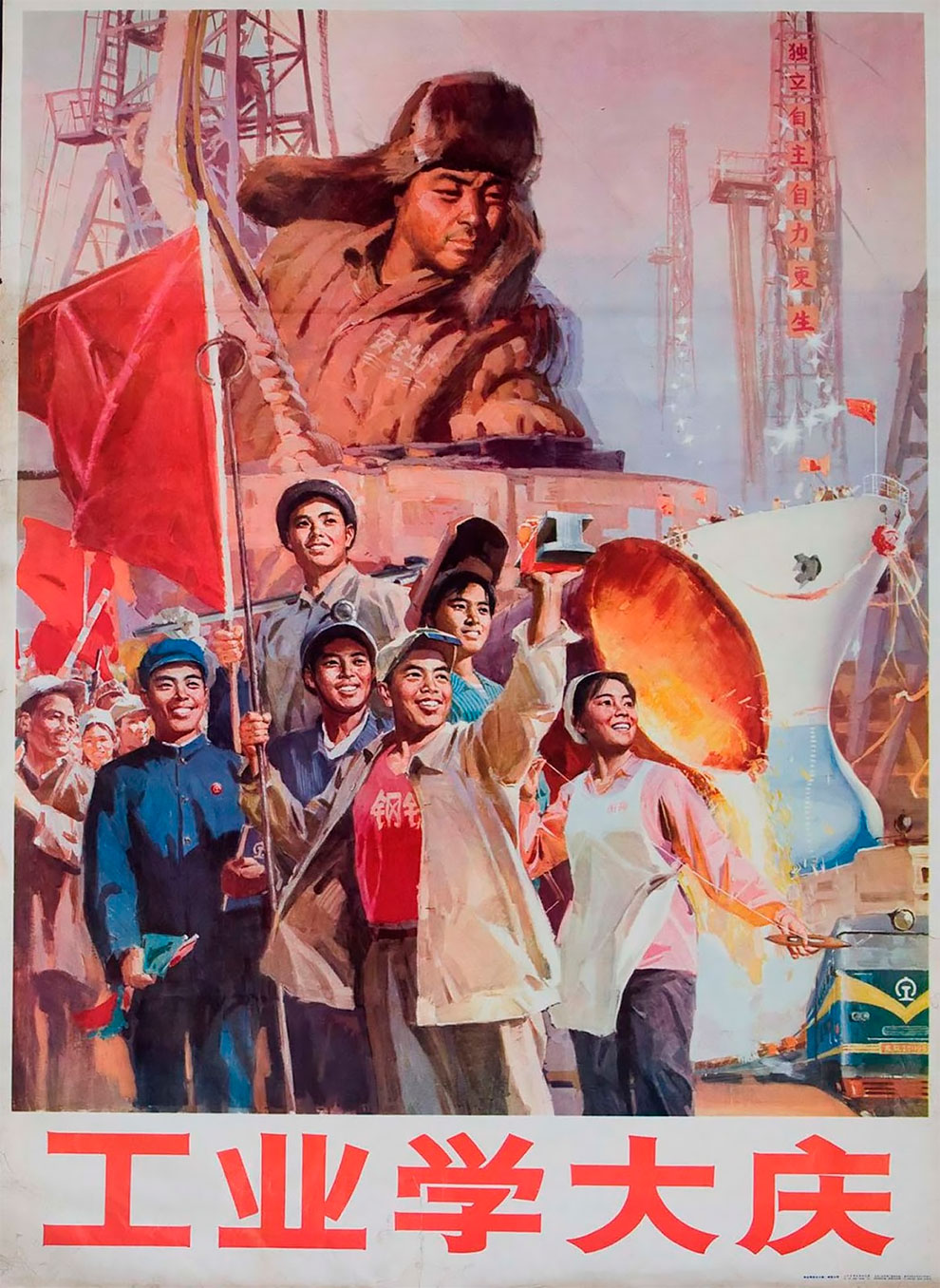
Photo credit: David Pollack / Corbis via Getty Images
“Pay Attention to Hygiene.” c. 1970.

Photo credit: David Pollack / Corbis via Getty Images
“Fruits and Melons That are Eaten Raw Must be Washed Properly.” c. 1975.
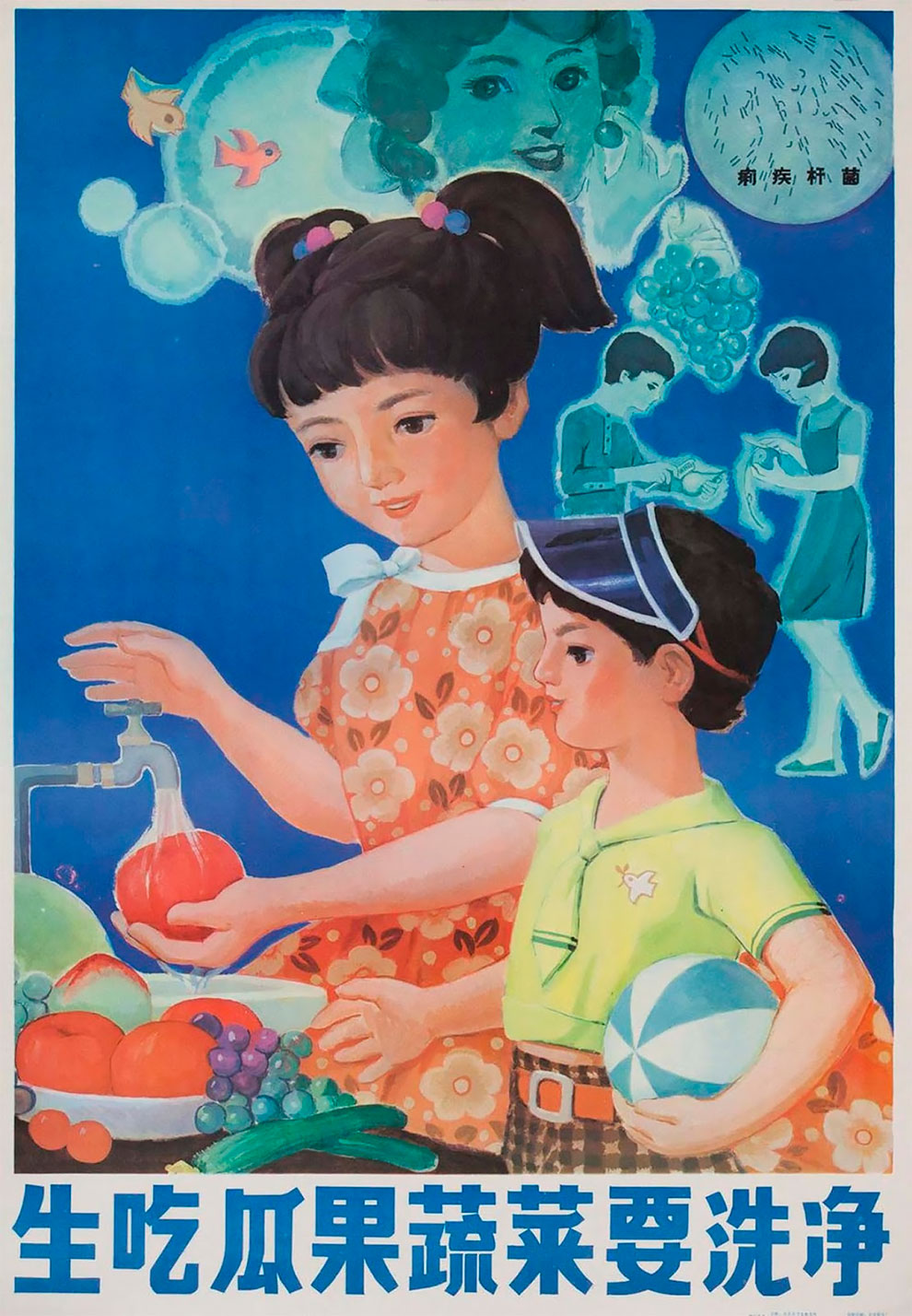
Photo credit: David Pollack / Corbis via Getty Images
A depiction of Dong Cunrui, who sacrificed his own life in 1949 during the Chinese Civil War while detonating explosives in an enemy bunker. c. 1960.
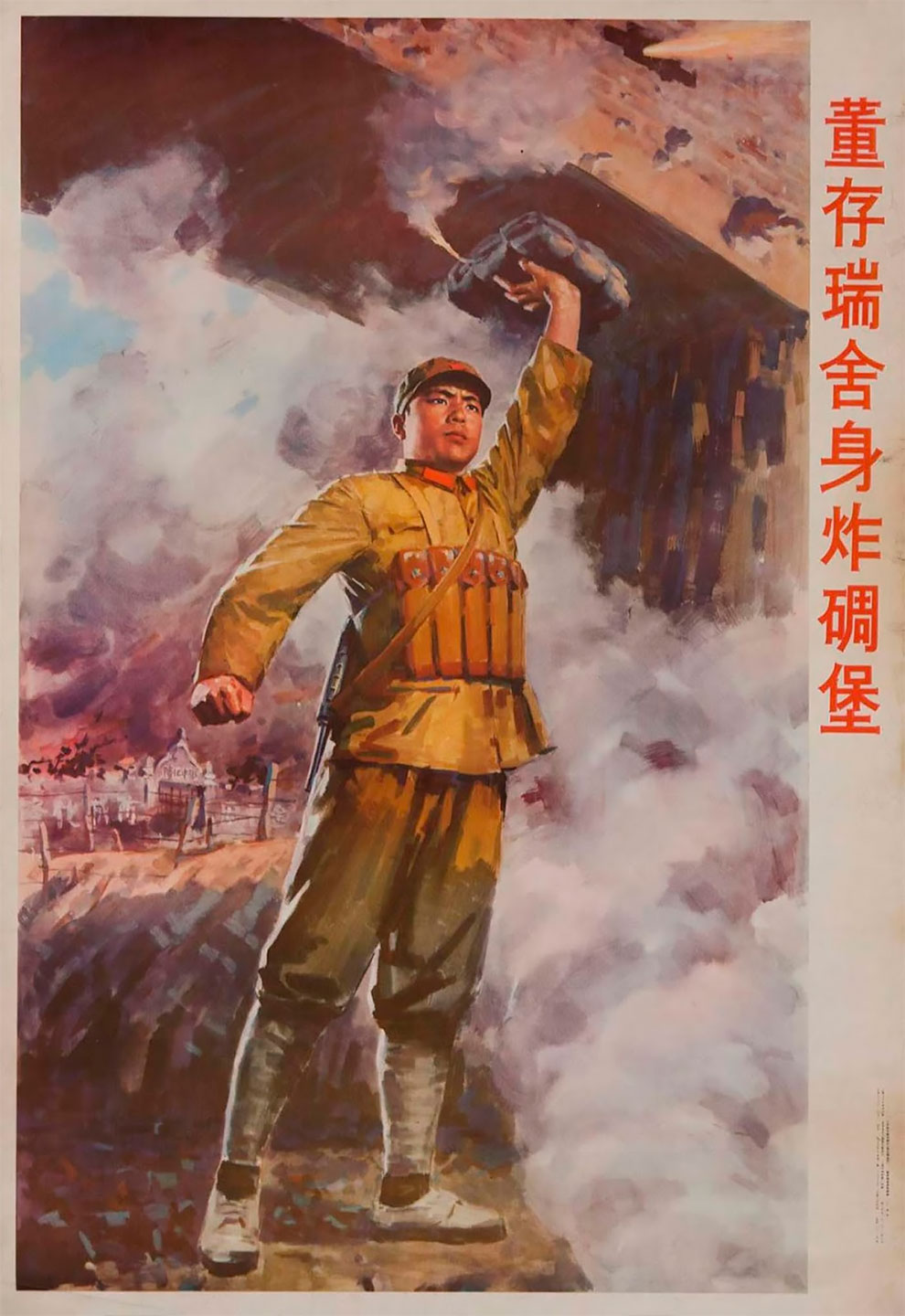
Photo credit: David Pollack / Corbis via Getty Images
“Follow the Constitution to Achieve Greater Industrial Victory.” c. 1970.
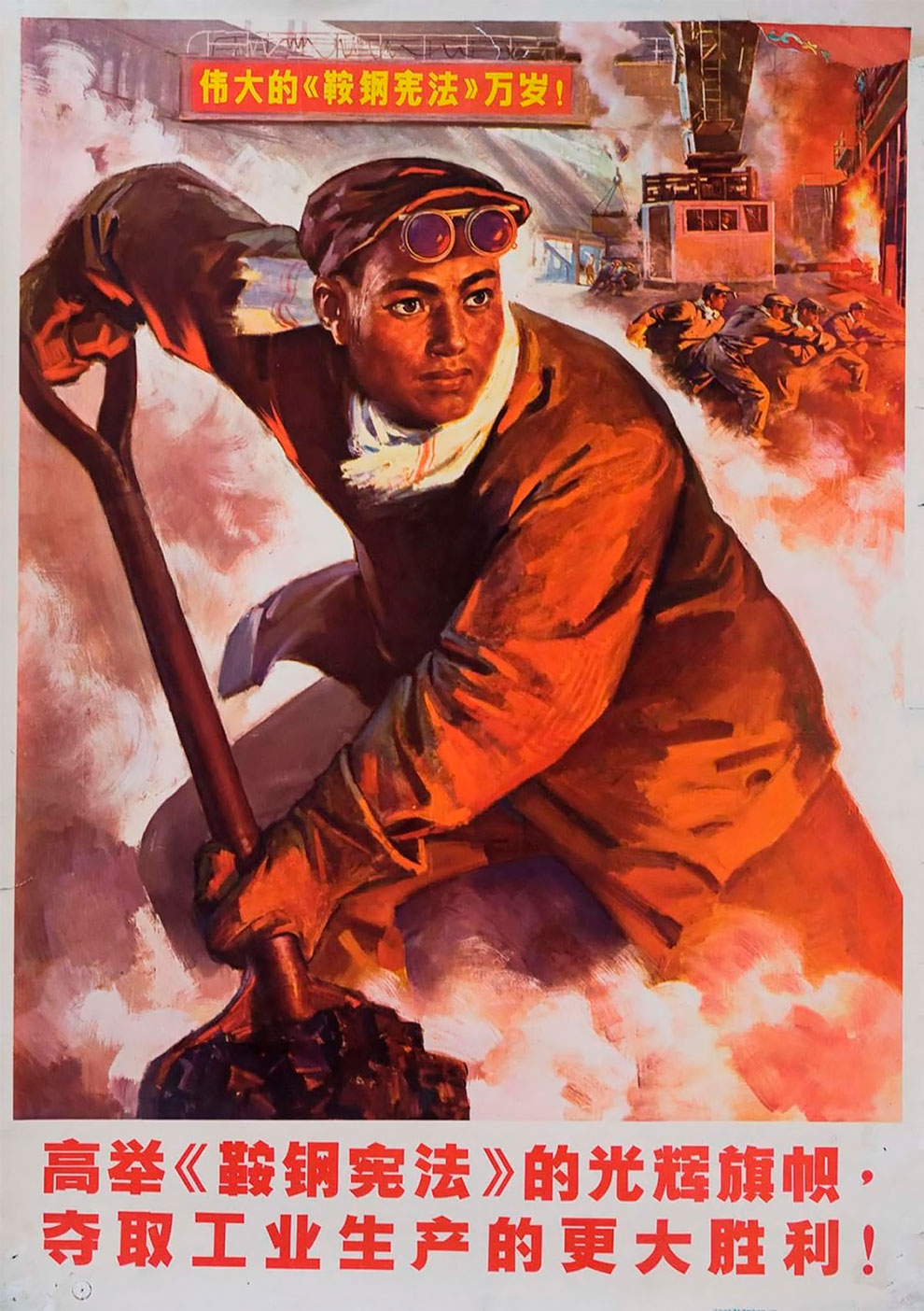
Photo credit: David Pollack / Corbis via Getty Images
“Have the Whole Country in Mind and Have the Whole World in View.” c. 1970.
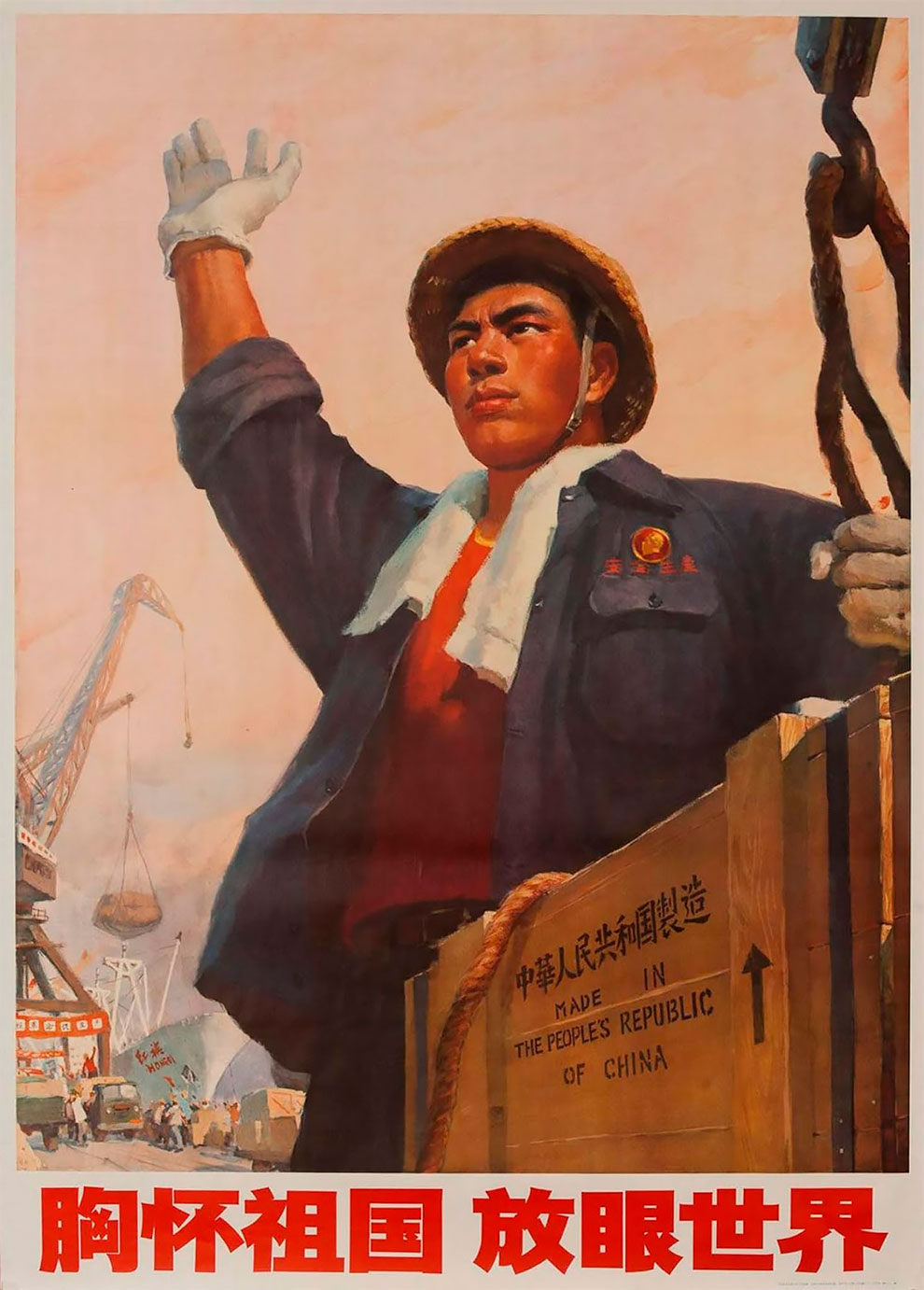
Photo credit: David Pollack / Corbis via Getty Images
“Win Honor For Our Socialist Country, Win Honor For Our Great Leader Chairman Mao.” c. 1970.
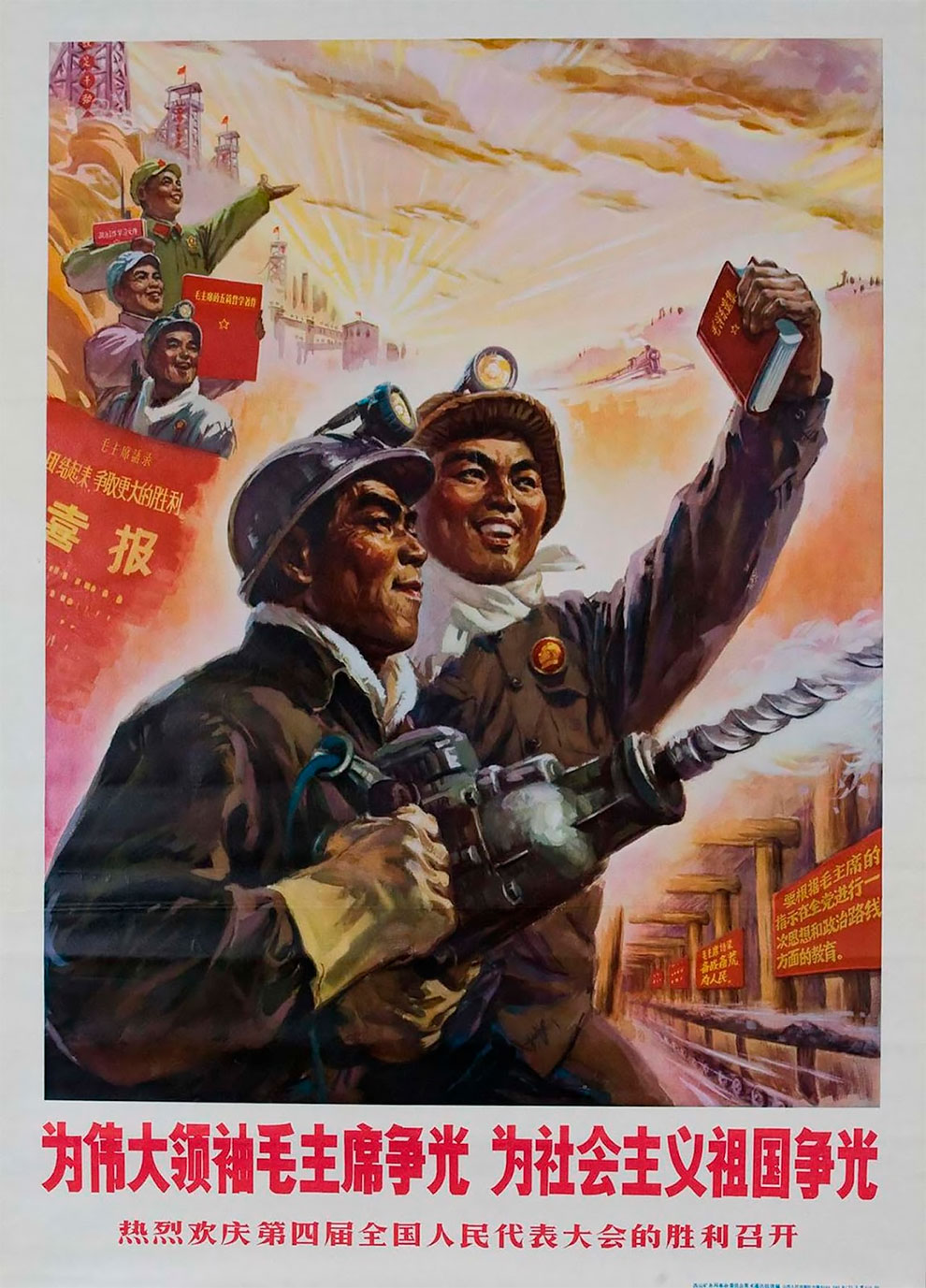
Photo credit: David Pollack / Corbis via Getty Images
“American Imperialism Must Be Driven Out of Southern Vietnam!” c. 1970.
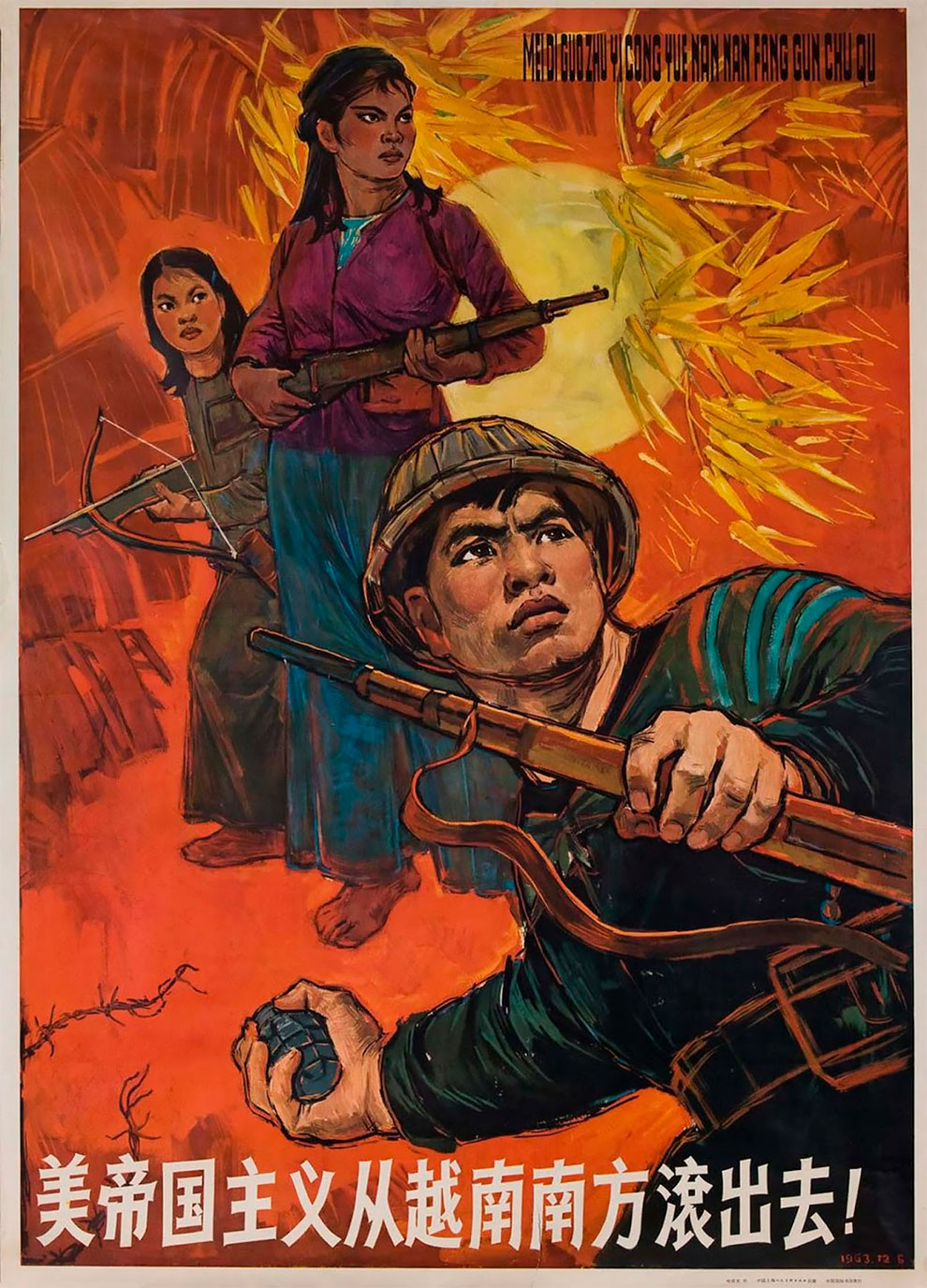
Photo credit: David Pollack / Corbis via Getty Images
“Strive to Collect Scrap Metal and Other Waste Materials!” c. 1970.
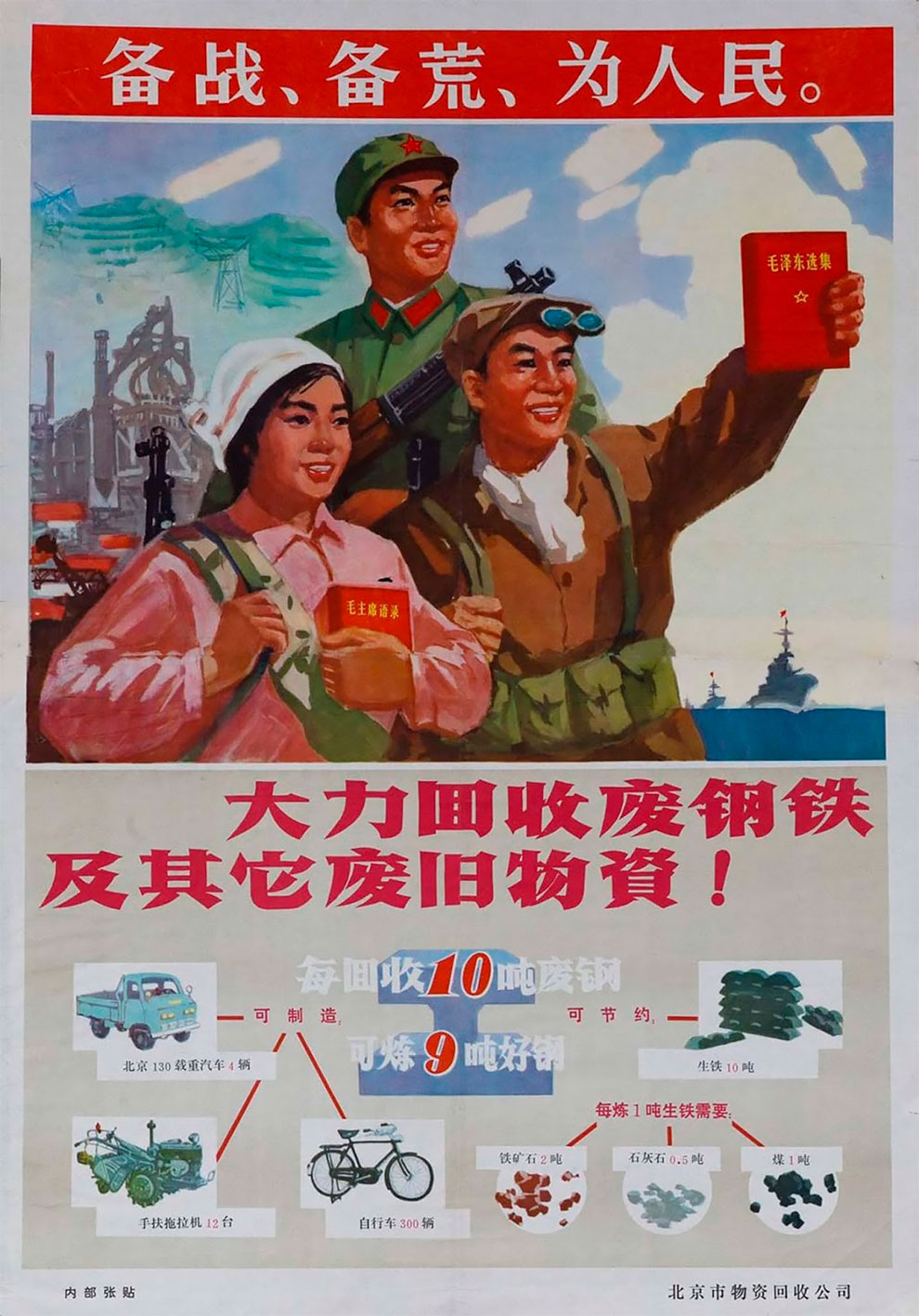
Photo credit: David Pollack / Corbis via Getty Images
“Vigilance, Defend the Motherland!” 1968.

Photo credit: David Pollack / Corbis via Getty Images